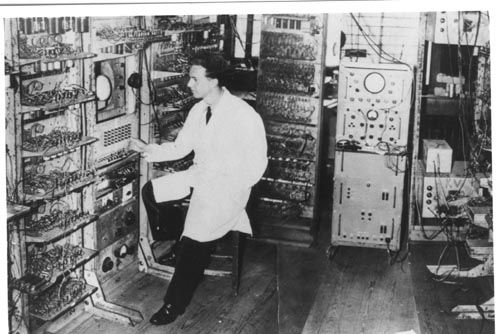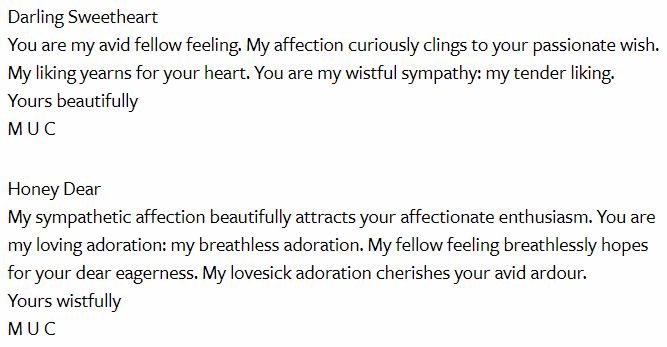
It has only been 70 years since Alan Turing suggested the idea of computers that can think or act similarly to the way any human would. Now, we have AI like ChatGPT that can write entire books with the help of some prodding and prompting, which goes to show how far we have come from those days when Turing and a colleague of his, Christopher Strachey, programmed the Mark 1, one of the largest computers in those days, to generate a random love letter.

Some of the love letters generated by the Mark 1 can be seen above. They read and sound mechanical, although it's perhaps one of the earliest works of artificial intelligence, preceding ChatGPT, and the story behind Turing and Strachey's collaboration is one that can be considered riveting and poignant at the same time.
Both were students at King's College, Cambridge, where Turing was a master's student in mathematics while Strachey was an undergrad in the same department, but was struggling with his academics, unlike the more prominent Turing, who was considered a genius in his field. Despite Strachey's struggles, he was a brilliant computer programmer.
Their friendship continued until Strachey wrote to Turing about his work on the ACE (Automatic Computing Engine), but mentioned that he was limited by the ACE, and he wanted a more powerful machine to test out some of his programs. Since Turing was working at Manchester at the time, he invited Strachey to visit him so that he can work on the Mark 1.
With that, Strachey was able to program the machine to play a song as well as a run a computer game of checkers. During that period, the two men had also been discussing the future of machines and machine intelligence. Intrigued by the subject, they experimented on how the computer can act more like a human with its own "free will" of sorts, despite being more limited since computers needed to be programmed to function.
In order to bypass this limitation, Turing suggested adding some feature of randomness to give the computer the appearance that it was thinking on its own. Ecstatic at the prospect of programming a computer to think like a human, Strachey collaborated with Turing to create a love letter generator. The rationale being that, to Strachey and Turing, writing love letters was a benchmark of intelligence.
They created a template and gave the computer a pool of choices from which it wold randomly pick words to fill in the template for the love letter. This is why, like the examples shown above, the letter reads a bit clunkily, albeit one can argue that, despite the clunkiness of the output, it had its own personal flavor and, to some extent, originality. In any case, the same can be said about human beings: our free will is limited by an exponentially greater pool of options, but still we can choose.
And so the love letter generator was born, the lovechild of Turing and Strachey, and perhaps, as Patricia Fancher asserts, was the only form through which the two men could express their sweet nothings to each other in a time when such acts were considered criminal in England. Still, it was the "something new" that Turing had been looking for, in his pursuit of developing machine intelligence.
Of course, later on, Turing would be convicted for gross indecency and given a choice between serving time in prison or chemical castration. Choosing the latter, Turing lived his final years, ultimately succumbing to cyanide poisoning ruled as suicide. It's a poignant story, but one that shows how our curiosities, passions, and ambitions can lead to riveting discoveries and creative endeavors.
(Image credit: Gwen Bell/Computer History Museum)






Commenting on Neatorama will earn you NeatoPoints!